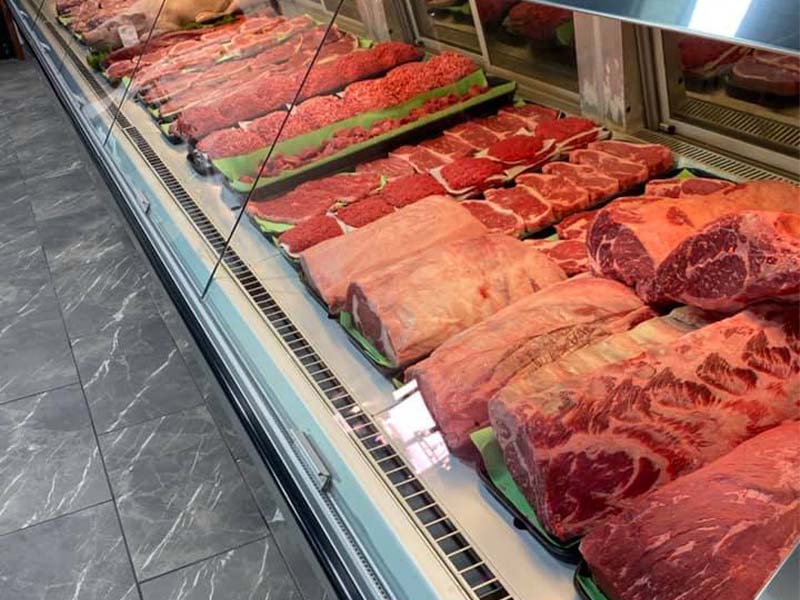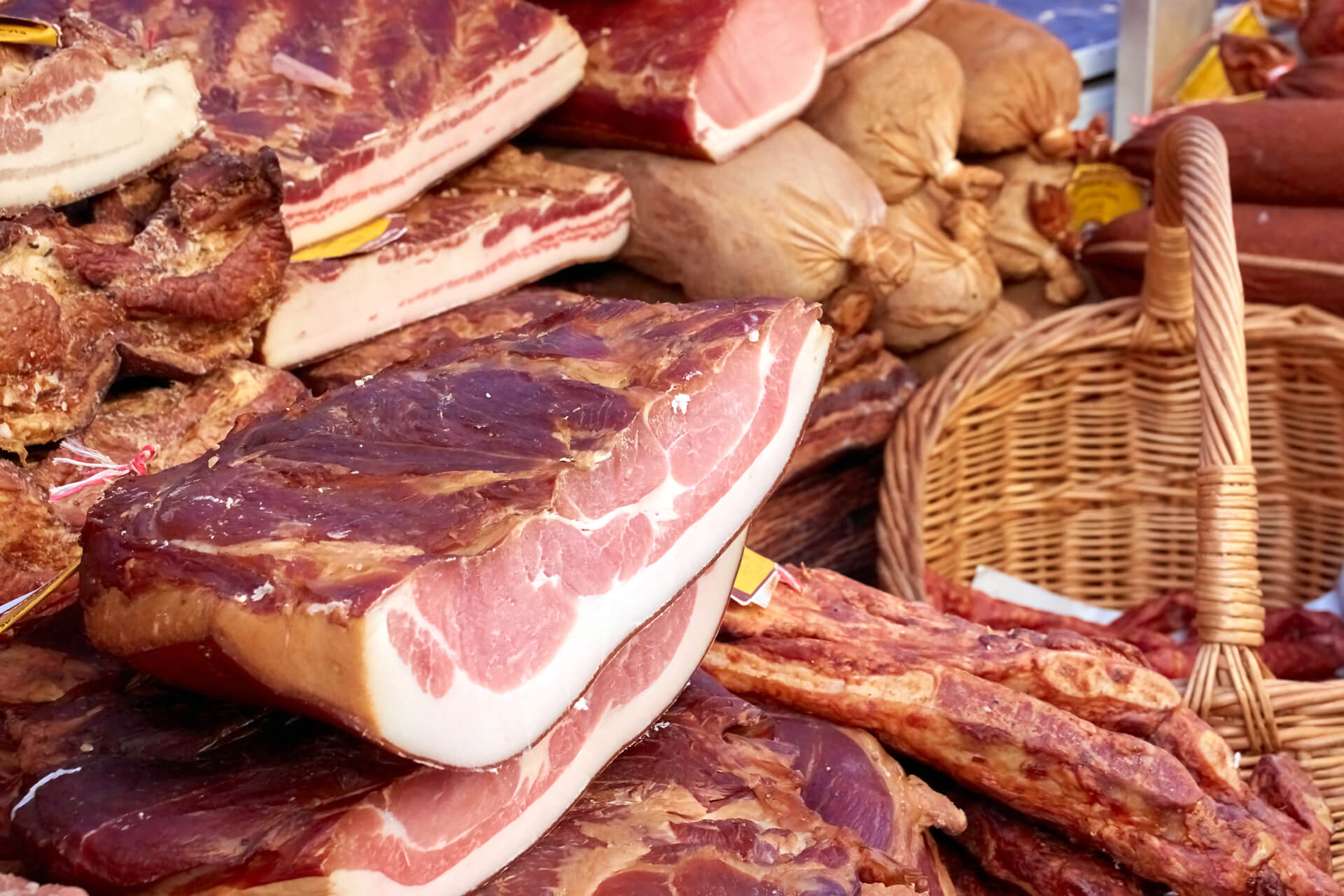Why Bagley Farms Meat Market Edwardsville IL Is the Best Choice for Top Quality Meats
Why Bagley Farms Meat Market Edwardsville IL Is the Best Choice for Top Quality Meats
Blog Article
Reveal the Art of the Butcher's Cut in a Modern Meat Market
In the ever-evolving landscape of modern-day meat markets, the butcher's cut has actually transcended its conventional roots, merging age-old craftsmanship with modern practices. bagley farms meat market edwardsville il. Today's butchers are not merely cpus of meat; they are well-informed artisans who highlight sustainability and ethical sourcing. Their proficiency in choose and preparing cuts customized to certain culinary requirements offers an unparalleled dining experience. What really establishes the modern butcher apart is their capability to build a much deeper link between customers and the beginnings of their meat. Exactly how do these masters balance tradition with technology, and what ramifications does this have for the future of meat consumption?
Development of Butchery Methods

The mid-20th century saw butchery strategies further fine-tuned by clinical insights right into muscular tissue biology and meat aging, improving both inflammation and preference. Advancements like vacuum product packaging and refrigeration prolonged item shelf-life, allowing butchers to diversify offerings and improve top quality control. This period likewise noted the surge of specialized equipment, such as band saws and meat slicers, which boosted precision and performance in meat handling.
Electronic systems currently assist in monitoring pet provenance and maximizing cuts to fulfill certain consumer choices. Furthermore, a renewal in artisanal butchery has arised, blending standard abilities with modern-day knowledge to provide to consumers looking for ethical and sustainable meat options.

Recognizing Meat Cuts

Comprehending the details of meat cuts is crucial for both butchers and consumers seeking high quality and worth. For butchers, specific cuts show ability and respect for the craft, ensuring minimal waste and ideal return.
The key classifications of meat cuts consist of primal, sub-primal, and retail cuts. Butchers after that break these down additionally right into sub-primal cuts, prior to lastly producing retail cuts offered to customers, like ribeye or tenderloin.
Comprehending muscle mass structure is vital; muscular tissues used a lot more often by the animal tend to be tougher and are best suited for sluggish cooking approaches, while less-used muscles, like those discovered in the loin, are more tender and ideal for grilling or roasting. Knowledge with these differences equips customers to make educated choices, enhancing their culinary endeavors.
Picking Top Quality Meat
Picking the ideal meat involves more than simply choosing a visually enticing item from the display screen. The art of selecting top quality meat requires a critical eye and understanding of Read Full Article specific characteristics that symbolize quality and quality.
Second of all, consider the marbling, which describes the white streaks of fat within the muscular tissue. Appropriate marbling is an essential indicator of tenderness and taste, as it melts during cooking, improving the meat's juiciness. Bear in mind, higher marbling usually correlates with superior top quality cuts, such as USDA Prime.
Structure is an additional important variable; meat needs to really feel firm to the touch, not slimy or extremely soft. In addition, be mindful of the aroma. Fresh meat needs to have a tidy, neutral smell, cost-free from any kind of sour or repulsive odors.
Coupling Cuts With Cooking Methods
Efficiently combining cuts of meat with the ideal cooking approaches is vital for accomplishing optimal flavor and texture. These approaches enhance the meat's natural tastes and ensure a juicy finish.
Alternatively, harder cuts like brisket and chuck roast are abundant in collagen, which breaks down into jelly when cooked gradually. These cuts are excellent for braising or slow-moving roasting, allowing the meat to soften over time and develop deep, complex tastes. Cuts such as brief ribs and pork shoulder make out well with slow-cooking approaches, where expanded cooking times transform their robust textures right into delicious dishes.
Lamb shanks and oxtail, which need prolonged cooking to soften, are best candidates for stewing or slow simmering. These techniques coax out rich, passionate flavors while preserving moisture. By understanding the distinct attributes of each cut, chefs and home cooks alike can elevate their culinary creations, making sure each dish is both satisfying and unforgettable.
The Butcher's Duty Today
Browsing the progressing landscape of the modern-day meat market, great site the butcher's function today extends beyond simple prep work of cuts. Contemporary butchers are cooking artisans, instructors, and supporters for lasting methods.
Along with crafting exact cuts, butchers currently involve directly with clients, providing cooking advice and tailoring options to fit specific demands and preferences. Their experience in meat aging, marbling, and flavor profiles empowers customers to make informed choices, improving their culinary experiences. This customized service exemplifies the butcher's evolving function as a trusted advisor in the kitchen area.
In addition, butchers are crucial in reducing waste, making use of entire pets to create varied items such as sausages and supplies - bagley farms meat market edwardsville il. This detailed technique not only values the pet however likewise straightens with contemporary sustainability objectives. This way, the modern butcher embodies both tradition and advancement, adjusting to an ever-changing market while maintaining the virtuosity and integrity of their craft

Conclusion
The contemporary butcher's craft delicately weaves conventional methods with contemporary innovations, stressing lasting practices and ethical sourcing. Mastery in recognizing diverse meat cuts and top quality signs empowers butchers to provide enlightened recommendations, lining up details cuts with optimum cooking approaches. This know-how not just boosts culinary experiences but likewise reinforces the link between consumers and the origins of their food. By recognizing historical techniques while welcoming modern demands, the butcher's function continues to be crucial site here in today's innovative meat market.
Report this page